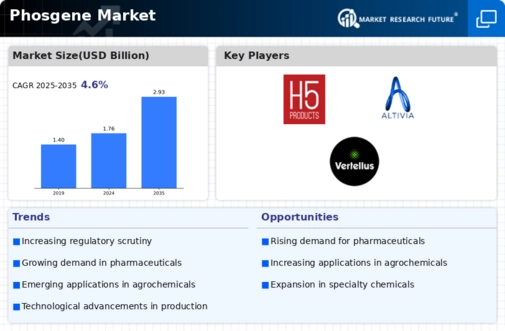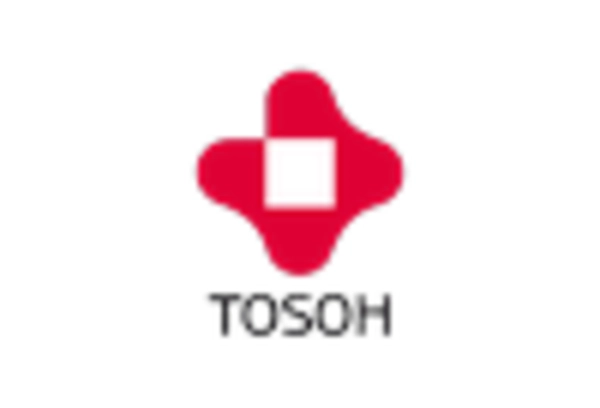Market Analysis
In-depth Analysis of Phosgene Market Industry Landscape
The market dynamics of phosgene, a chemical compound widely used in the production of various chemicals and materials, reflect a complex interplay of factors that influence its supply, demand, and pricing. Phosgene is a key raw material in the synthesis of isocyanates, which are crucial components in the manufacturing of polyurethanes, plastics, and foam products. One of the significant drivers of the phosgene market is the robust demand from the polyurethane industry, which continues to expand due to the versatile applications of polyurethane in construction, automotive, and furniture sectors.
Global economic trends play a pivotal role in shaping the demand for phosgene. As economies grow, there is an increased need for construction materials, automotive components, and consumer goods, all of which utilize products derived from phosgene. Conversely, economic downturns can lead to a reduction in demand for these end products, impacting the phosgene market. The cyclical nature of industries that heavily rely on phosgene makes the market susceptible to economic fluctuations.
Safety and environmental concerns are crucial factors influencing the phosgene market dynamics. Due to its toxic nature and potential hazards, strict regulations and safety measures govern the production, transportation, and handling of phosgene. Stringent regulatory requirements can impact production costs and influence market dynamics. Additionally, advancements in technology and process innovations are ongoing to enhance safety measures associated with phosgene manufacturing and usage.
The phosgene market is also influenced by the development of alternative processes and chemicals. Manufacturers are continually exploring and investing in alternative methods to produce isocyanates and other chemicals without relying on phosgene. This trend is driven by both environmental considerations and the desire to create more sustainable and cost-effective processes. The emergence of alternative technologies poses challenges to the traditional phosgene market, requiring adaptation and innovation from industry players.
Globalization has a significant impact on the phosgene market, with production and consumption patterns influenced by international trade dynamics. Manufacturers are strategically locating production facilities to optimize costs and cater to regional demand. The interconnectedness of markets means that disruptions in one region can have ripple effects on the global phosgene supply chain. Additionally, geopolitical factors and trade tensions can impact the availability and pricing of phosgene on the international market.
Supply chain disruptions, such as raw material shortages or transportation challenges, can create fluctuations in the phosgene market. The availability of key feedstocks, such as chlorine and carbon monoxide, directly affects phosgene production. Any disruptions in the supply chain of these raw materials can lead to shortages and impact market dynamics. Moreover, transportation constraints and logistics issues can influence the timely delivery of phosgene to end-users, affecting the overall market.
Price volatility is a common feature of the phosgene market, driven by factors such as raw material costs, supply-demand imbalances, and geopolitical events. The cost of key feedstocks, energy prices, and market speculation can contribute to fluctuations in phosgene prices. End-users, particularly those in downstream industries like polyurethane manufacturing, closely monitor these price movements, as they directly impact production costs and profitability.

















Leave a Comment